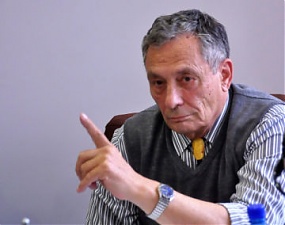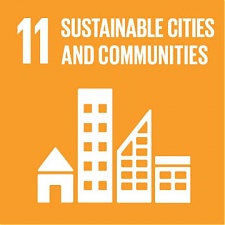EU – Baltic States, Investments, Latvia, Real Estate, Round Table
International Internet Magazine. Baltic States news & analytics
Tuesday, 23.04.2024, 09:21
Modern city: sustainability vs. “mega-projects” in Latvian development
 Print version
Print version |
|---|
Cities are here to stay, no doubt about it! Presently, about 54% of the world’s population lives in urban areas, a proportion that is expected to increase to 66% by 2050. Projections show that urbanization combined with the overall growth of the world’s population could add another 2.5 bln people to urban populations by 2050, with close to 90% of the increase concentrated in Asia and Africa, according to a new United Nations report.
The 2014 issue of the World Urbanization Prospects
noted that the largest urban growth will take place in India, China and
Nigeria. These three countries will account for 37% of the projected growth of
the world’s urban population between 2014 and 2050. By 2050, India is projected
to add 404 mln urban dwellers, China 292 mln and Nigeria 212 mln.
http://www.un.org/en/development/desa/news/population/world-urbanization-prospects-2014.html
Accordingly, goes concentration in the Baltic States’
capital cities: e.g. in Latvian capital and adjacent territory there are
already over three-fourths of the country’s population (over 704 thousand out
of less than 2 mln).
City planners & sustainable development
At the end of September 2015, world leaders during a special
UN summit adopted a new strategy for global development. It was called Transforming
our World: the 2030 Agenda for Sustainable Development" and included
17 Sustainable Development Goals (SDGs) and 169 smaller targets.
The Agenda has become a vital commitment of all UN member
states to achieve sustainable development by 2030. For the first time in a
world’s history, the adoption of the 2030 Agenda served as a landmark
achievement, providing for a shared global vision towards sustainable
development for all.
See: https://sustainabledevelopment.un.org/post2015/transformingourworld
The new SDGs came into effect in January 2016; they are
going to guide most of the social-economic decisions by the national leaders over
the next fifteen years. All governments and city planners will work to
implement the UN Agenda-2030, as well as at the regional and global levels,
taking into account different national realities, capacities and levels of
development and respecting national policies and priorities.
Sustainable urban development and management are crucial to
the quality of peoples’ life. City planners have to work with local authorities
and communities to renew and plan the cities and human settlements so as to
foster community cohesion and personal security and to stimulate innovation and
employment. They have to reduce the negative impacts of urban activities and of
chemicals which are hazardous for human health and the environment, including
through the environmentally sound management and safe use of chemicals, the
reduction and recycling of waste and more efficient use of water and energy.
Besides, the city planners have to work to minimize the impact
of cities on the global climate system. The upcoming United Nations Conference
on Housing and Sustainable Urban Development will make some other
recommendations too.
Reference: https://sustainabledevelopment.un.org/post2015/transformingourworld
As to the Riga’s “mega projects”, it seems
that financing would come from the local sources: i.e. Riga city’s budget has
already millions in profit. However, until the new EU 7-year budget/ financial
framework, there are chances to use the EU’s sources.
Among priorities, there are the following fields:
-“green city” concept:
it has to include numerous spheres, e.g. from new parks and re-forestation, to
waste collection and processing, architecture, proper isolations in the houses
and thermostats in heating, etc;
- fast-track
transport system between Riga and Jurmala region, with all necessary
infrastructure facilities (may be a proper usage of Daugava-river connection);
- clean air on the
streets and clean water in households, to name a few.
SDG -11: make cities and human settlements inclusive, safe, resilient and sustainable
 |
|---|
SDG-11 targets include several guiding points that can
orient Riga city planners towards more optimal development in line with the
global recommendations. Information about all 17 SDGs can be followed by the
link below; here we are concentrating on the targets that are pertinent for
Latvian urban development. Most important and pertinent are the following (in
abridged version):
1. To ensure
by 2030, access for all to adequate, safe and affordable housing and
basic services;
2. By
2030, provide access to safe, affordable, accessible and sustainable transport
systems for all, improving road safety, notably by expanding public transport,
with special attention to the needs of those in vulnerable situations, women,
children, persons with disabilities and older persons;
3. By
2030, enhance inclusive and sustainable urbanization and capacity for
participatory, integrated and sustainable human settlement planning and
management;
4. By
2030, reduce the adverse per capita environmental impact of cities, including
by paying special attention to air quality and municipal and other waste management;
5. By
2030, provide universal access to safe, inclusive and accessible, green and
public spaces, in particular for women and children, older persons and persons
with disabilities.
Besides, the SDG-11 includes
three sub-goals, two of which are also important for Riga’s development:
a) to support
positive economic, social and environmental links between urban, per-urban and
rural areas by strengthening national and regional development planning;
b) by 2020,
substantially increase the number of cities… adopting and implementing
integrated policies and plans towards inclusion, resource efficiency, etc. Strengthen
efforts to protect and safeguard the world’s cultural and natural
heritage;
Reference to SDGs: http://www.un.org/sustainabledevelopment/sustainable-development-goals/
Conclusion
Global leaders have
recognized 17 most important world’s issues to be resolve by 2030; they are
called Sustainable Development Goals or SDGs. And urban issues – called
sustainable cities & communities - are among most vital for modern
civilization.
It seems that urban
issues in Latvia are generally concentrated in its capital, Riga, where most of
the country’s citizens reside. That means the SDG-11 can clearly serve as a
guide to Riga’s perspective development. In particular, such aims as
It would be quite appropriate to organise a Sustainable
Development Week (SDW) in Latvia (and probably in the other Baltic States’ capitals)
for the “Evaluation of the Commitment to Sustainable Development Goals”. The
aim of the initiative is to facilitate public-private collaborations around the
promotion of biodiversity through the setting up of networks for research
action and public-private partnerships.
As a platform, SDW will support decision-makers in the
elaboration of Baltic Cities’ convention on sustainable and prosperous life in
the cities.
Cities have been for decades the headache for economists,
politicians, urban planning, architectures and social scientists. However,
since UN Agenda-2030 and Sustainable Development Goals (SDGs) in effect from
January 2016 some new visions appeared. Hence, sustainability concept could be the
main “mega-project” for a modern city.
Success or failure in building sustainable cities will be a
major factor in the success of any city planning.
References: some
publications on city’s issues in the BC in 2016
- Cities for clean environment and sustainable energy. 23.06.2016.
- Urban issues in the EU: Eurostat’s review 09.09.2016.
- New urban agenda for Europe and the world. 24.10.2016.








 «The Baltic Course» Is Sold and Stays in Business!
«The Baltic Course» Is Sold and Stays in Business!

